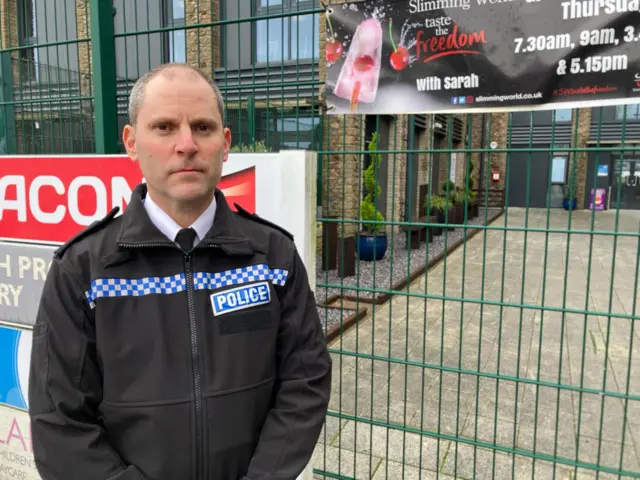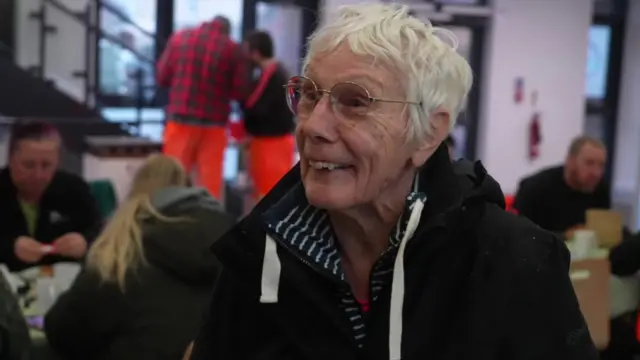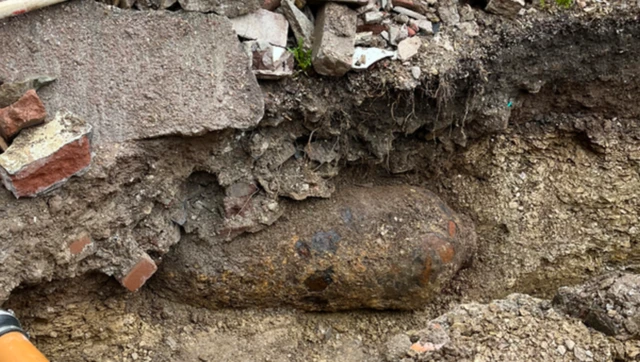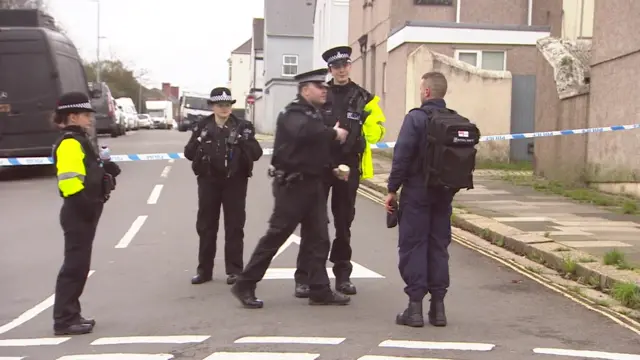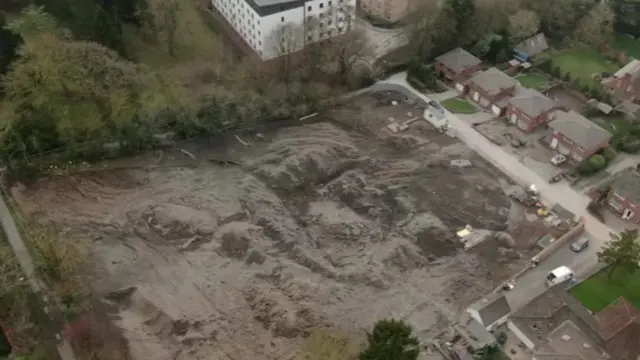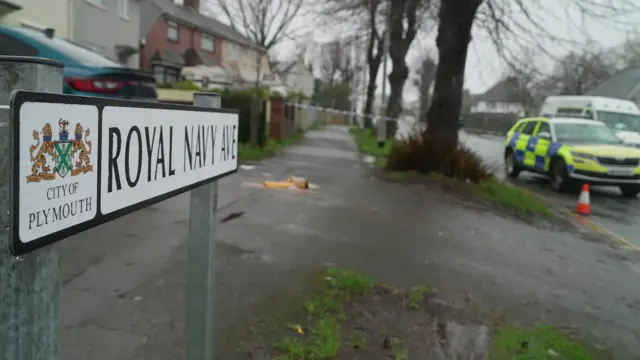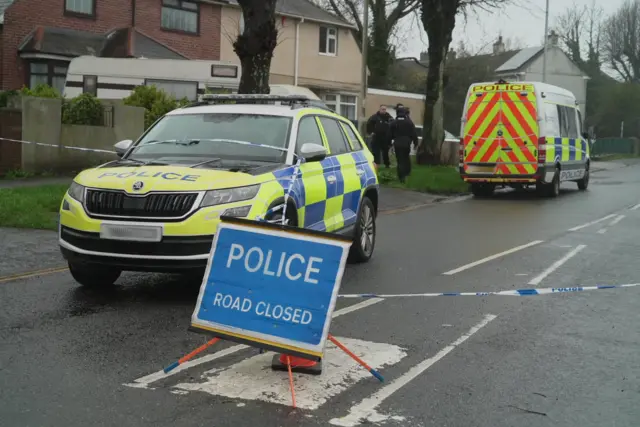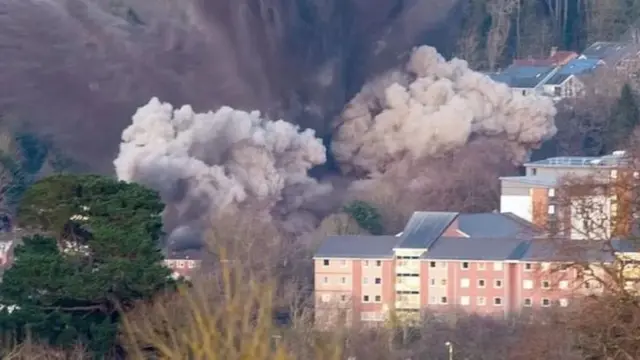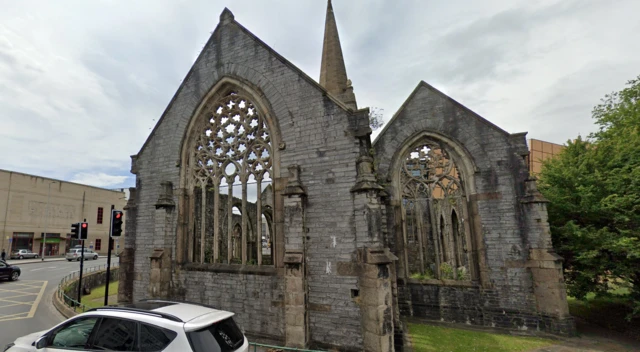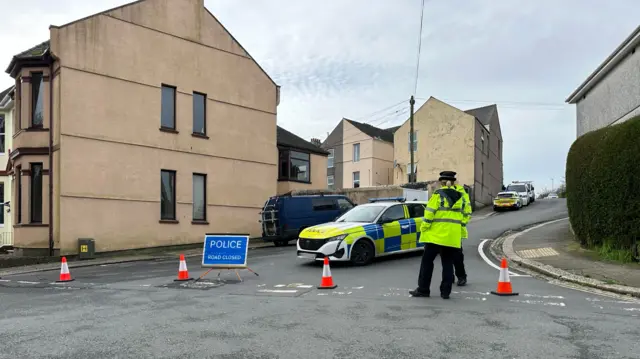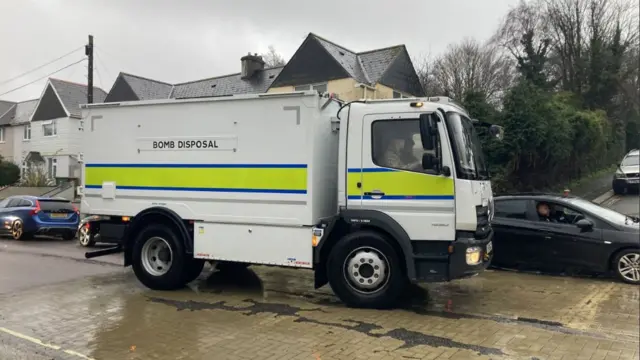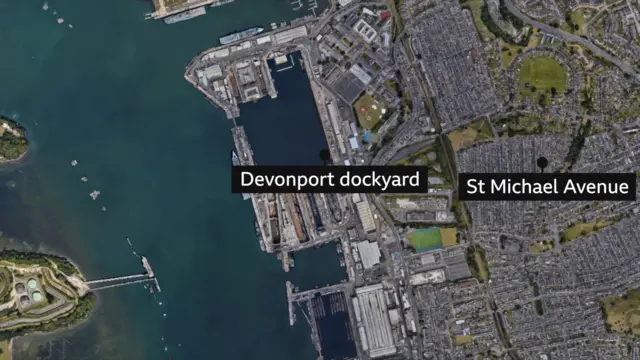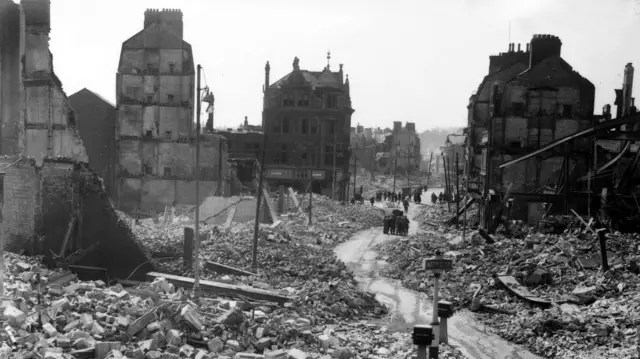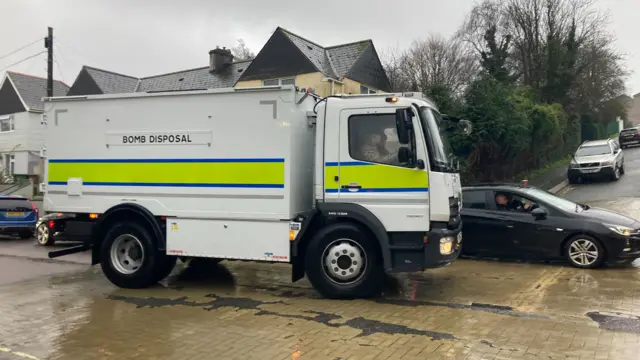Community thanked for patiencepublished at 14:26 GMT 21 February 2024
Charlotte Cox
BBC South West
A police officer has thanked residents in Keyham for their patience while work is being done to make an unexploded bomb safe.
On Wednesday, Ch Supt Matt Longman visited the Beacon Centre in North Prospect where some of the displaced residents have been getting together.
Speaking outside, he said: "All the agencies are working together to keep people safe.
"It's about analysing the safest and least disruptive way of dealing with it. This is low risk."
Ch Supt Longman said Devon and Cornwall Police thought up to 1,200 people had been displaced from their homes but added more places for them to go were becoming available.
